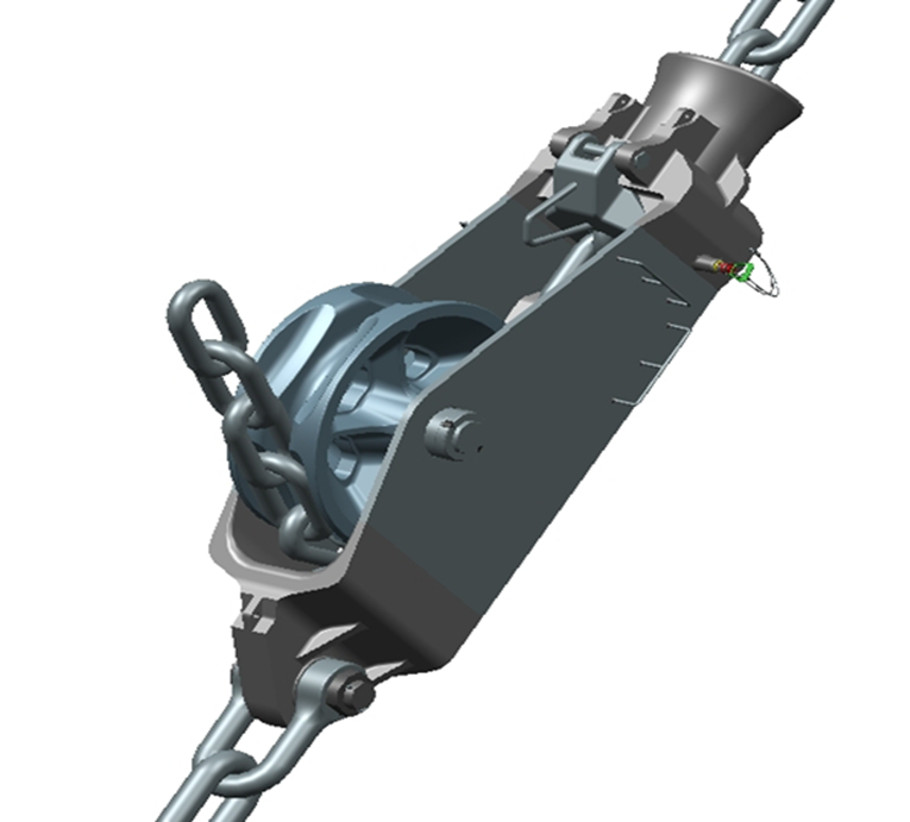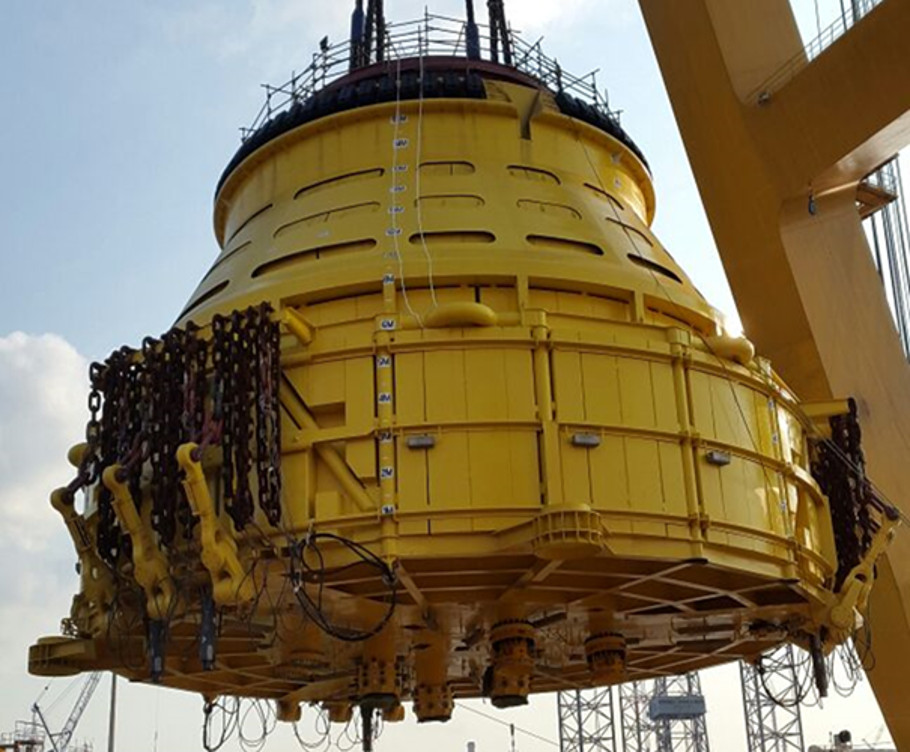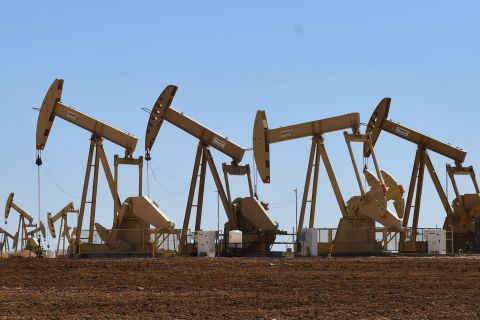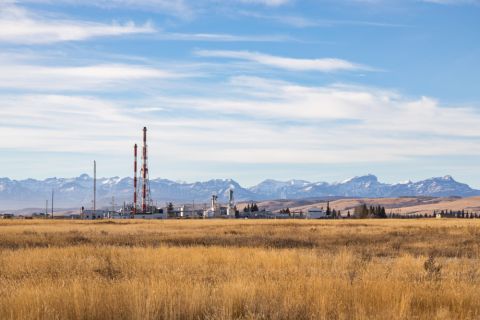When Shell’s Stones project went online in 2016, it became the world’s deepest producing oil and gas field. Discovered in 2005, the field is in 2,895 m (9,500 ft) of water in lease Block 508 of the Walker Ridge area about 322 km (200 miles) off the coast of New Orleans, La. Shell reported at the time of sanctioning in 2013 that the field contained more than an estimated 2 Bboe of oil in place.
Safely developing and producing from the Lower Paleogene reservoir located about 8,077 m (26,500 ft) below sea level and 5,182 m (17,000 ft) below the mud line would require the harnessing of old technologies and new for Shell and SBM to realize success at Stones. The field was developed using a FPSO vessel and an industry-first pairing of a steel lazy wave riser system with the largest disconnectable buoy turret mooring system.
“There was a lot of innovation in the turret configuration. It was a major engineering exercise to fully develop the design,” said Andrew Newport, SBM Offshore’s technology director for mooring systems, risers and renewables.
SBM had been developing one of the needed technologies in-house and a second for another project; two others were specifically developed for Stones.
 Connection, tension
Connection, tension
SBM developed the in-line mooring connector as an in-house project. The company took it to Technology Readiness Level (TRL) 4 in 2012. Newport said the in-line tensioner has a number of potential applications because of the advantage of tensioning legs from a workboat rather than from the floater itself.
Normally, mooring legs would be connected to the turret and then tensioned using a winch on the turret, but that’s not possible with the buoy. Instead, Newport said it was necessary to connect the legs to the buoy on station without the turret present, which without the in-line connector would have meant using a subsea winch to pull in the legs and connect at depth, or pulling the buoy to the surface and making dry connections.
“The tensioning device sits within the mooring leg,” he said. “We took a large-scale prototype and qualified it to TRL 4 in the North Sea, but Stones is the first application.”
SBM also had developed a high-capacity distributed locking device to TRL 4. The early design work for the technology was carried out for the Shtokman project in the Russian sector of the South Barents Sea, but Stones was the first application. Newport said disconnectable systems are typically sought for use in areas with tropical storms but also are applicable for ice fields where the systems may have to disconnect under very high mooring loads.
The locking device arrangement allows SBM to take any single connector out of operation, check it and return it to service. The distributed locking system around the edge of the buoy latches the buoy into place once it is pulled in.
“We saw the need for a high-capacity locking device and had already done a lot of design work ahead of Stones. We expect to reuse this system in the future,” he said.
Floating the Loop
The buoy for Stones was so large—partly because of the ultradeep water depth, the Gulf of Mexico’s infamous Loop Current and the high-pressure steel risers—that SBM and Shell came up with the idea to use syntactic foam blocks rather than traditional steel plate when designing the buoy. The foam blocks provide the buoyancy needed to carry the mooring legs as well as the risers. There are 1,100 tonnes of risers weight that need to be supported.
When the buoy is disconnected to allow the FPSO to leave the field, the buoy stabilizes about 100 m (328 ft) below the surface. However, the Loop Current can drag it down to 200 m (656 ft), placing higher pressures on the outside of the buoy. Using a traditional steel buoy design, thick steel walls would have been required to resist this pressure, Newport said, leading to the need for even more buoyancy to balance the steel weight.
“Instead, the design we developed is an open steel frame, and the buoyancy is provided by the syntactic foam blocks inside. This was a first for us,” Newport said.

Also because of the buoy’s size—it has 6,000 tons of displacement and is larger than any buoy that’s been built to date—a novel heave-compensation system was necessary to address the fact that the buoy and FPSO would both be moving independently during reconnection operations.
“If the buoy and vessel come together, there would be slack in the reconnection winch cable and then a high snatch load as they move apart again,” he said.
The use of a heave compensation system, reeling in and paying out the winch cable to maintain a constant tension avoids the generation of the snatch loads.
The first use of steel lazy wave risers with a turret mooring system was for Shell’s Espirito Santo Field. SBM leveraged this experience and success for Stones, adding value by using a field-proven technology. The Turritella represents the second application of steel lazy wave risers with a turret mooring system and the first use with a disconnectable buoy.
“A lot of our innovation projects have been with Shell,” Newport said.
He cites other existing technologies that were necessary for the Stones mooring system to become a reality.
One example is swivels, which transfer well fluids, power, signals and chemicals between the geostationary turret and the weathervaning vessel. Another is the bogie bearing weathervaning system, which was first used on the harsh environment Schiehallion FPSO West of Shetlands and is now used on all of SBM’s large diameter turret mooring systems. The weathervaning system allows the vessel to rotate around the turret to the position of least resistance to the prevailing waves, current and wind, minimizing the loads on the mooring system and vessel hull.
Recommended Reading
Life on the Edge: Surge of Activity Ignites the Northern Midland Basin
2024-04-03 - Once a company with low outside expectations, Surge Energy is now a premier private producer in one of the world’s top shale plays.
CEO Darren Woods: What’s Driving Permian M&A for Exxon, Other E&Ps
2024-03-18 - Since acquiring XTO for $36 billion in 2010, Exxon Mobil has gotten better at drilling unconventional shale plays. But it needed Pioneer’s high-quality acreage to keep running in the Permian Basin, CEO Darren Woods said at CERAWeek by S&P Global.
Analyst: Chevron Duvernay Shale Assets May Sell in $900MM Range
2024-01-29 - E&Ps are turning north toward Canadian shale plays as Lower 48 M&A opportunities shrink, and Chevron aims to monetize its footprint in Alberta’s Duvernay play.
EIA: Permian, Bakken Associated Gas Growth Pressures NatGas Producers
2024-04-18 - Near-record associated gas volumes from U.S. oil basins continue to put pressure on dry gas producers, which are curtailing output and cutting rigs.
Uinta Basin's XCL Seeks FTC OK to Buy Altamont Energy
2024-03-07 - XCL Resources is seeking approval from the Federal Trade Commission to acquire fellow Utah producer Altamont Energy LLC.





